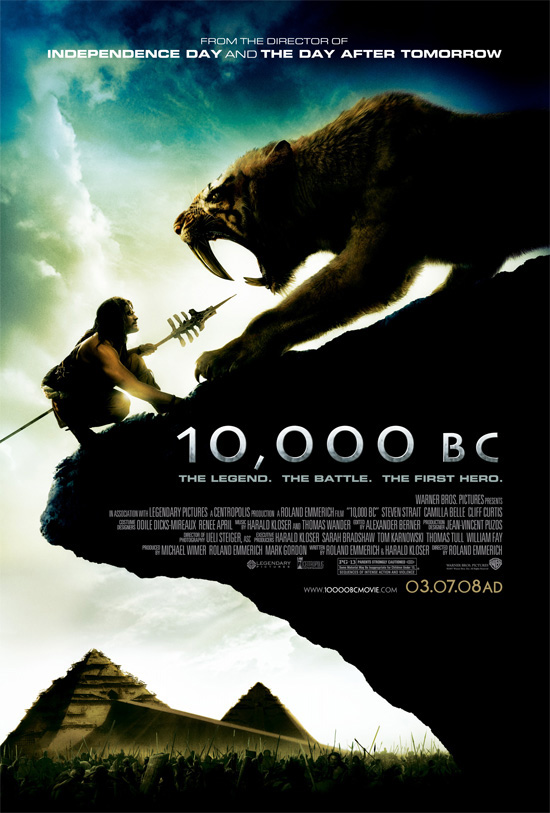The latest from director Roland Emmerich (Independence Day, The Day After Tomorrow) transports viewers back in time to when mammoths and saber-toothed tigers ruled the earth. Don’t expect a history lesson, though, as any historical accuracy is replaced by a dependence upon filmmaking’s past.
The movie chronicles the struggles of an isolated mountain tribe torn apart after an attack of “four-legged demons,” or strange men on horseback. Young hunter D’Leh (Steven Strait) manages to escape only to see the love of his life, Evolet (Camilla Belle), get carried away. Teaming up with a trio of fellow survivors, including tribe leader Tic’Tic (Cliff Curtis), he sets off on a journey to get her back, encountering dangerous creatures, foreign natives and a vast city along the way.
The script, written by Emmerich and composer Harald Kloser, proves neither is a gifted writer. The characters, plot, setting and other elements are devoid of originality or creative thought. It is obvious the main selling point was the visual component, which is depended on to propel the storytelling as a result. While the visual effects are usually entertaining — really the only worthwhile thing in the movie — they still pale in comparison to Emmerich’s best work and last year’s stylized historical epic, 300.
Although the film typically avoids producing boredom, it nevertheless contains several frustrating elements. For starters, the costumes and makeup are entirely unremarkable, reducing half of the cast to wearing dreadlock wigs. On the whole, the design and feel never fit into a convincing cinematic spectrum, but are brought to an overbearing completion when the film tries to one-up the controversial look of the Persians from 300 toward the end. Speaking of the ending, it blatantly rips off both 300 (notice a pattern?) and The Matrix within moments of one another. It seems whenever the writers got into trouble, they chose to rely either on a string of coincidences of which there are far too many — or simply lift what worked from other sources.
The story’s narrative construction is also lacking, including its constant voiceover narration and cutting back to the current status of the mountain tribe. In attempting to convey a storybook mood, these devices only hurt the pacing and annoy in the process. Which brings us to the story’s over reliance on superstitions and prophesies. Never convincingly integrated, they are only a contrivance used to quickly explain away the story’s weaker sections and should not have been included.
Given Emmerich’s notable filmography, one would have assumed a visit to the prehistoric age would be a good idea. Regrettably, the assumption never proved itself onscreen. What appeared instead was questionable decision making and a poorly told story, causing 10,000 BC to resemble the extinct remains from a half dozen stronger films.
2 Stars







